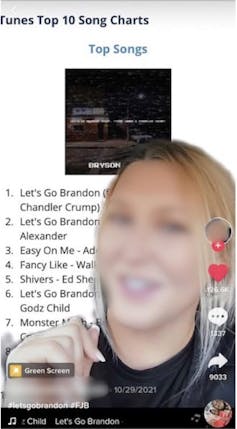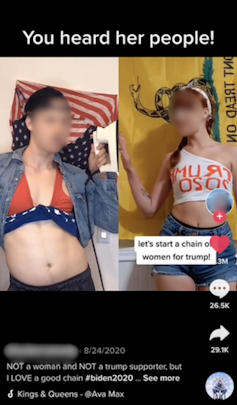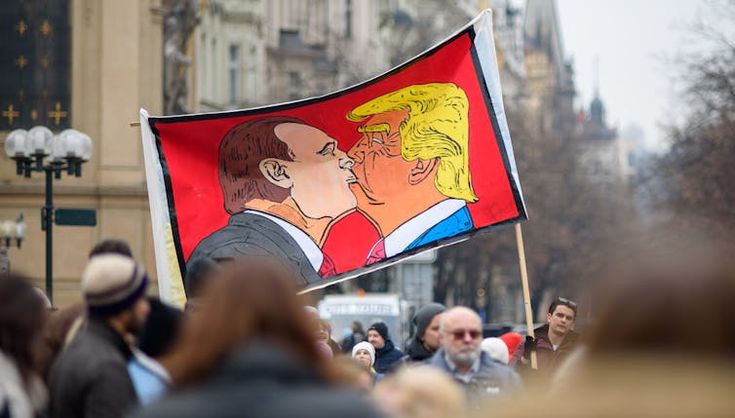
I realise that the term ‘genocide’ is being politicised and misused in some circumstances – so as a human rights lawyer, I am careful to apply the term only when there is a prima facie case and the evidence is clear. Mokhiber said.
Craig Mokhiber, formerly head of the UN Rights Commission’s New York office, has accused global powers of complicity in a ‘clear-cut case of genocide’ by Israel in Gaza as he reisgned at October 28. 2023.
“Regarding Gaza, this is the most clear-cut case of genocide I have seen in my career,” he said, using the United Nations Convention on Genocide as reference.
“We are witnessing genocide in the 21st century, and it seems that the United Nations is once again unable to stop it.”
Mokhiber said Israel has been exceptionally brazen in declaring its intent to commit genocide – partly because Tel Aviv is not being held accountable by its allies.
“What’s interesting about this case compared to others is that generally, when you try to prove genocidal intent, you need to get secret government documents and files and dig through old secret archives to find indicators of intent.”
“Here we have frank and clear statements of genocidal intent by senior Israeli officials, both public and official, including the president, the prime minister, senior ministers and senior military officials.
“They have a strong sense of impunity, frankly, because of the protection they enjoy from the United States, Britain, and Europe in international forums.”
Mokhiber, a human rights lawyer, has documented rights abuses in Palestine since the 1980s and went on to work in Gaza as a human rights advisor in the 1990s.

@mickwallacemep Israel couldn’t be carrying out this Genocide without the support of the #US and #EU – The people are on the side of the persecuted #Palestinians ♬ original sound – MickWallaceMEP
Pro-Palestine posts outnumber pro-Israel posts something like 70:1 on TikTok.#AIPAC & #ADL & the rest of the #IsraelLobby is FREAKING OUT.
It’s why Congress is sacrificing #FreeSpeech & their political careers to ban an app 170M Americans use & enjoy.
TikTok: yourfavoriteguy pic.twitter.com/JsAQF6ikzo — DeepFake Dissident (@inovajon) March 20, 2024
Some on TikTok claim that US lawmakers’ attempt to ban the app is rooted in suppressing pro-Palestinian voices, despite labeling it as a measure against national security threats from China pic.twitter.com/XeeGcFaBS3 — TRT World (@trtworld) March 19, 2024
Yass is a major investor in ByteDance and may be behind Trump’s flip flopping on a TikTok ban.
He also happens to be the single biggest political donor in the U.S. this cycle. https://t.co/zT5jjbCI7E — Citizens for Ethics (@CREWcrew) March 22, 2024
Aljazeera: TikTok faces ban amid claims of anti-Israel ‘indoctrination’
While data security issues are paramount, less often discussed is TikTok’s power to radically distort the world picture that America’s young people encounter. Israel’s unfolding war with Hamas is a crucial test case.
Sen. Josh Hawley (R) author of “Our Christian Nation” in a letter to US Treasury Secretary Janet Yellen on Nov. 7. 2023
Hawley cited a recent Harvard CAPS-Harris Poll in which 51 percent of Americans aged 18-24 said that Hamas’s October 7 attacks on Israel could be justified by Palestinians’ grievances, in contrast to older Americans who overwhelmingly back Israel.
“Analysts have attributed this disparity to the ubiquity of anti-Israel content on TikTok, where most young internet users get their information about the world,” Hawley said.
Rubio said last month that TikTok was among a number of platforms that had become “cesspools of [pro-Hamas] misinformation and indoctrination” and a vehicle for “brainwashing.”
WASHINGTON (AP) — The House on March 8. passed a bill that would lead to a nationwide ban of the popular video app TikTok if its China-based owner doesn’t sell its stake, as lawmakers acted on concerns that the company’s current ownership structure is a national security threat.
The bill, passed by a vote of 352-65, now goes to the Senate, where its prospects are unclear.
TikTok, which has more than 170 million American users, is a wholly-owned subsidiary of Chinese technology firm ByteDance Ltd.
The lawmakers contend that ByteDance is beholden to the Chinese government, which could demand access to the data of TikTok’s consumers in the U.S. whenever it wants. The worry stems from a set of Chinese national security laws that compel organizations to assist with intelligence gathering.
What Happened When India Pulled the Plug on TikTok
In India, a country of 1.4 billion, it took TikTok just a few years to build an audience of 200 million users. India was its biggest market. Then, on June 29, 2020, the Indian government banned TikTok, along with 58 other Chinese apps, after a simmering conflict between India and China flared into violence at their border.
A popular form of entertainment, which had not been the subject of political debate, vanished overnight. Now, as politicians are wrangling in Washington over a plan that could shut access for the 170 million Americans using TikTok, the example set by India gives a foretaste of what may come — and how audiences and other social media companies catering to them might respond.
TikTok, owned by ByteDance in Beijing, came to India early, establishing a wide base in 2017 in dozens of the country’s languages. Its content — short videos — tended to be homey and hyperlocal. An endless scroll of homemade productions, many of them shot in small towns or farms and set to popular music, helped while away the hours across the world’s cheapest and fastest-growing mobile data network. As it has in the United States, TikTok became a platform for entrepreneurial extroverts to build businesses.
Several Indian companies tried to get into the gap caused by the disappearance of Chinese competition. But America’s tech giants, with their deeper pockets and expanding global audiences, came to dominate India. The country is now the biggest market for both YouTube (almost 500 million monthly users) and Instagram (362 million), with roughly twice as many users as either has in the United States, though they earn far less revenue per consumer.
The New York Times
TikTok’s duet, green screen, and stitch turn political point-scoring into an art form

Quick et al, CC BY-NC-SA
Jessica Maddox, University of Alabama
Since its astronomical rise in popularity during the 2020 COVID-19 lockdowns, TikTok has played an increasing role in all aspects of American life, including politics, from the White House briefing key TikTok creators on the war in Ukraine to Joe Biden’s presidential campaign launching a TikTok account.
The U.S. House of Representatives passed legislation on March 13, 2024, seeking to force TikTok’s China-based parent company to sell the app or face a ban in the U.S. Even if this legislation passes the Senate and Biden signs it into law, it’s unlikely TikTok will go away before the 2024 U.S. presidential election. Any law banning TikTok is likely to be challenged in court, and the app won’t simply disappear from people’s phones overnight.
Given that TikTok is almost certain to play a role in the 2024 election, it’s important to examine how TikTok helps shape political expression and discussion. With communications scholar Mackenzie Quick, I recently published a journal article exploring how American TikTok users use the app’s stitch, duet, and green screen features to stoke partisan conflict.
Getting together
TikTok says its mission is to “inspire creativity and bring joy.” In 2019, it introduced several features to help bolster that mission: duet, green screen, and stitch. Duet allows you to post your video side by side with a video from another TikTok user. The green screen allows you to superimpose your video on a video from another TikTok user. Stitch allows you to append your video to the end of a short clip from a video from another TikTok user.
TikTok describes these features as giving users “the most creative tools available” and providing a way for users “to engage with the world of content that’s made … by the ever-creative TikTok community.” Given these descriptions, it appears that these tools were designed to increase creativity, interaction, and connections.
They can be used in playful ways or used by subject matter experts to convey information. For example, some veterinarians use TikTok to convey pet health information.
However, a platform’s statements about how it intends its features to be used and how people actually use them can be quite different. While these features are often used in TikTok’s preferred ways, our research found that in political tiktoks, people often use the tools to double down on their political positions and attack those who disagree with them. In a time of volatile political divisiveness, these features can function as outlets for people to express their strongly held political views.

Quick et al, CC BY-NC-SA
Scoring points
Reinforcement and insults were recurring themes in our study. For instance, the green screen feature was often used to incorporate “evidence” in the background to support the creator’s claims. With this feature, “evidence” was often presented in the form of news articles or posts from other social media platforms.
One post from a conservative-leaning creator features a screenshot of the Apple iTunes music store charts to show the popularity of a song called “Let’s Go Brandon,” a conservative rallying cry and coded insult against Biden. This creator presents the song’s position at No. 1 in the music store as proof that the conservative viewpoint is popular. “Evidence” is a loose term and could be anything that supports the creator’s viewpoint.
We found the duet feature was often used to communicate nonverbally, often to poke fun at someone with opposing political views. Eye rolling, smirking, and head shaking were common gestures. In one video, a conservative creator starts a chain—an extended succession of duets—of women who support former President Donald Trump. A liberal-leaning creator uses the duet feature to join the chain with a video of themselves holding a clothes iron out to the side to make it appear as though the iron is burning the original creator’s hand.

Quick et al., CC BY-NC-SA
Stitches functioned similarly to duets, but people tended to use the feature to verbally respond and refute the previous creator’s point. These uses show that on political TikTok, personal feelings and proving others wrong matter more than constructive debate.
The who and why of political TikTok
While app regulation is a political issue, understanding how political conversations occur across TikTok remains important for understanding an increasingly polarized American electorate. When considering political discussions on TikTok, however, it’s important to remember that the app’s features don’t force users to do anything. Users actively shape their experiences in digital spaces.
Also, as political communication scholars Daniel Kreiss and Shannon McGregor note, it’s important to proceed with caution when discussing the effects of technology on polarization because not all groups experience polarization the same way. For instance, the Black Lives Matter movement may be seen as polarizing for disrupting existing power structures, but its goal is to fight for equality, and it’s important to consider that context when looking at the group’s use of technology.
The lesson is to consider who is engaging in polarizing content and why they are doing so. While some users expressing themselves via these TikTok features aim to prove others wrong simply, akin to petty arguments, others may be critiquing and challenging the powerful.![]()
Jessica Maddox, Assistant Professor of Journalism and Creative Media, University of Alabama
This article is republished from The Conversation under a Creative Commons license. Read the original article.




2 Comments
Pingback: Gaza Ceasefire Ahead of Trump's Inauguration Leaves Palestine Genocide Legacy on the Biden Admin - Bergensia
Pingback: Why did TikTok get banned in the USA - Bergensia